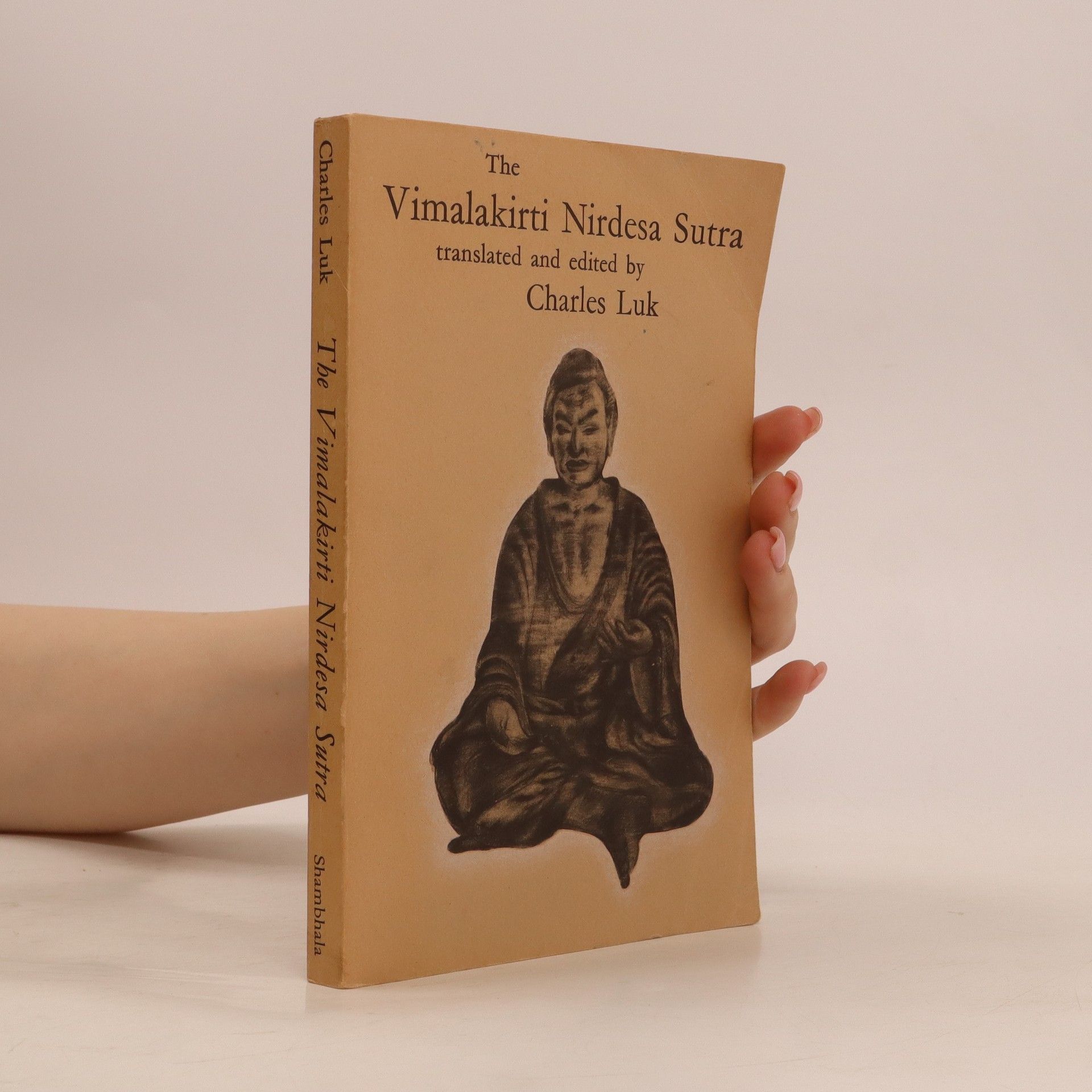Poetry. [O]ne / writes a journal // to create the / guise of reading / creation. // It's all already / not there!, writes Dot Devota in her newest collection of explosive, visionary rage-songs sung in the private-public space of a journal toward the public-private space of community. PMS: A JOURNAL IN VERSE is a radical rejection of artistic perfection and false relationship; a record of the mind's neon blaze, flickering light upon such underworldly irritants as brost psychosis, compulsive self-reflection, failed artistic support structures, and literary theory. This is a formidable, darkly humorous collection fueled by the intelligence of an electric, revelatory state.
Charles Luk Livres
Charles Luk (Lu K'uan Yu) fut un érudit bouddhiste dévoué, dont l'œuvre d'une vie consista à traduire des textes bouddhistes cruciaux du chinois vers l'anglais. Ses efforts ont permis d'introduire la profonde sagesse de la philosophie orientale à un public occidental plus large. Grâce à ses traductions méticuleuses, les lecteurs accèdent aux enseignements bouddhistes dans un format accessible. L'héritage de Luk est défini par sa capacité à jeter des ponts entre les cultures et par son engagement à diffuser la connaissance spirituelle.






Healing Wounds: A Vietnam War Combat Nurse's 10-Year Fight to Win Women a Place of Honor in Washington, D.C.
- 288pages
- 11 heures de lecture
What is the price of honor? It took ten years for Vietnam War nurse Diane Carlson Evans to answer that question—and the answer was a heavy one. As a nurse in Vietnam in 1968–1969, Diane Carlson Evans learned to overcome seemingly impossible odds—including the night she and a corpsman kept twenty-six severely dehydrated soldiers alive in the darkness as artillery barraged their hospital. Fourteen years later, this Wisconsin mother of four felt called to establish the first memorial honoring military women on the National Mall. But she had no idea what she was in for. What followed was a ten-year battle to overcome sexism, bureaucracy, and betrayal within her own rank. Evans was labeled a “feminazi” and received death threats. At a national Veterans of Foreign Wars convention, she was all but booed off the stage. Allies undermined her. Editorial writers opined that a women’s memorial adjacent to the Vietnam Veteran Memorials was “like putting an Elvis statue on Mt. Rushmore.” But Evans persevered; detailed notebooks reveal that she completed more than twenty thousand tasks in the quest for her decade-long dream. And in November of 1993, she made history: the Vietnam Women’s Memorial was dedicated near The Wall, bringing honor, healing, and hope to the 265,000 otherwise forgotten women who served during the Vietnam War.
Set in the second century CE, the narrative follows Vimalakirti, a householder embodying the Bodhisattva path while engaging in secular life. The Vimalakirti Nirdesa Sutra emphasizes that spiritual practice is attainable for those outside monastic settings, making it particularly relevant for Western practitioners of Buddhism. The translator offers a clear and precise text, enriched with explanatory notes and a glossary to aid understanding. This work highlights the integration of spiritual and worldly life, showcasing the universality of Buddhist practice.
Once viewed as an embarrassing superstition, the theatrical religious performances of Korean shamans--who communicate with the dead, divine the future, and become possessed--are going mainstream. Attitudes toward Korean shamanism are changing as shamanic traditions appear in staged rituals, museums, films, and television programs, as well as on the internet. Contemporary Korean Shamanism explores this vernacular religion and practice, which includes sensory rituals using laden altars, ecstatic dance, and animal sacrifice, within South Korea's hypertechnologized society, where over 200,000 shamans are listed in professional organizations. Liora Sarfati reveals how representations of shamanism in national, commercialized, and screen-mediated settings have transformed opinions of these religious practitioners and their rituals. Applying ethnography and folklore research, Contemporary Korean Shamanism maps this shift in perception about shamanism--from a sign of a backward, undeveloped Korea to a valuable, indigenous cultural asset.
Logbuch. Gründen. Weiblich.
Positionsbestimmungen und Empowerment. Vom ökonomisch-ökologischen Navigieren in schwierigen Zeiten
Pelikane können eine Flügelspannweite von bis zu 3,45 m und ein Gewicht von bis zu 13 Kilo erreichen. Sie zählen zu den größten und schwersten flugfähigen Vögeln. Dennoch geht es in diesem Buch ausschließlich um Jan Cönig und seine besten Texte aus elf Jahren Poetry Slam, Lesebühne und Literatur-Comedy. Zehn Jahre Bühne hinterlassen ihre Spuren. Unterhaltsame Spoken-Word-Texte, gedichtet, ungedichtet, essenziell. Von der Gartenarbeit mit der Oma bis zur feurigen Eskalation der Geburtstagsparty. Kein Thema ist zu ernst, kein Gag zu flach, wen diese Texte nicht erreichen, der*die wohnt auf dem Mond. Jan Cönig ist sicher einer der arriviertesten Autor*innen und Spoken-Word-Künstler*innen Hessens. Und noch lange nicht müde, die deutschsprachigen Poetry-Slam-Bühnen zu rocken.